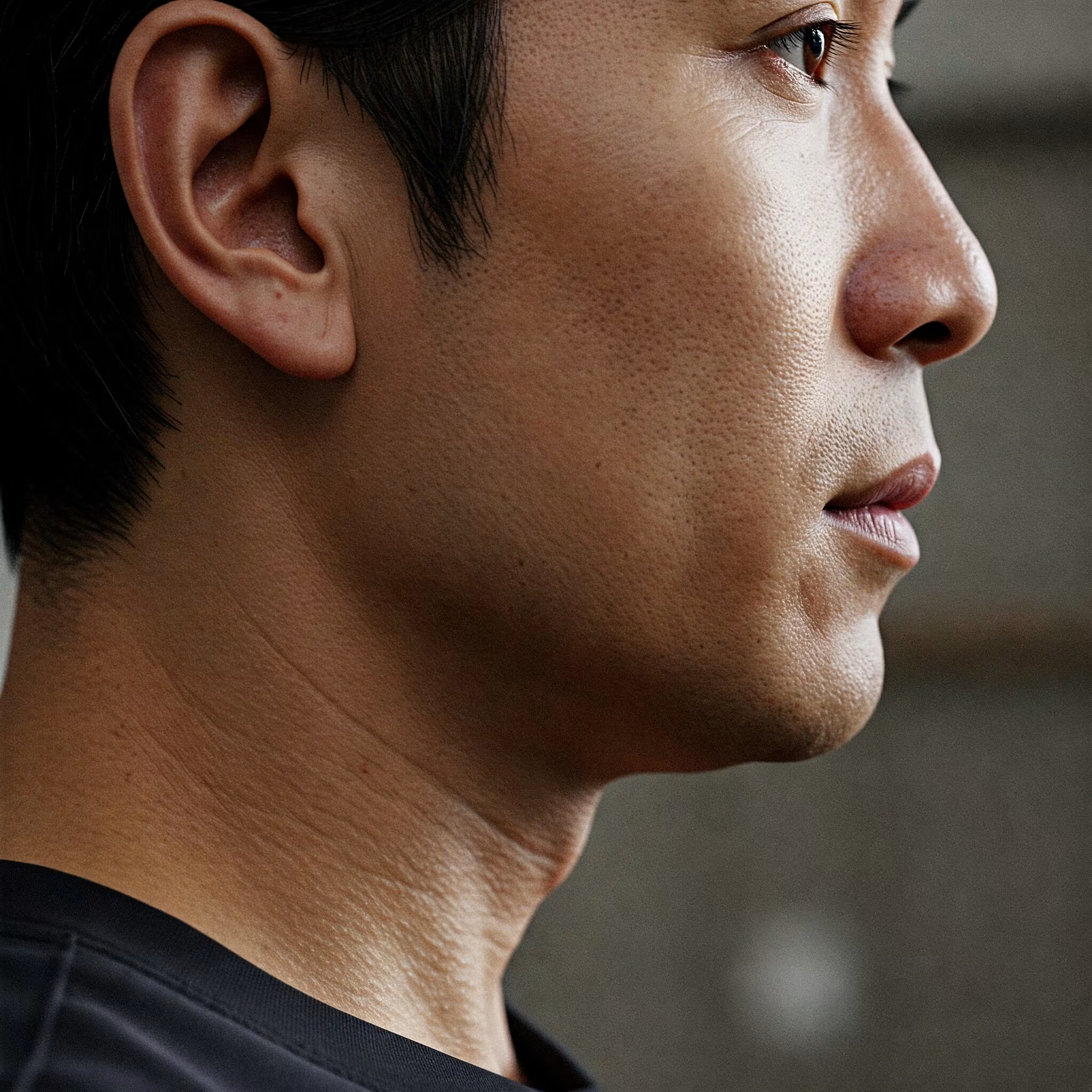Dental structure significantly influences facial appearance, and many individuals experience concerns about protruding elements of their facial structure.
Among Asians in Singapore, bimaxillary protrusion is one of the most common dental conditions that affects both aesthetics and functionality.
This comprehensive guide covers everything you need to know about this condition and the treatment options available in Singapore.
What is Bimaxillary Protrusion?
Bimaxillary protrusion is a dental condition characterized by protruding and forward-leaning upper and lower front teeth (incisors).
This creates a distinctive profile where both the teeth and lips appear to stick out more prominently than average.
The condition often results in difficulty closing the lips completely, a protruding appearance of the lips, a convex facial profile, potential development of a gummy smile, and possible association with an anterior open bite (where front teeth don’t touch when biting).
This condition is particularly common among Asian populations, especially among ethnic Chinese and Malays in Singapore. It’s also frequently observed in African-American individuals.
Causes of Bimaxillary Protrusion
Bimaxillary protrusion develops due to multiple factors, making it what experts call a “multifactorial” condition.
The primary causes include environmental factors such as mouth breathing and specific tongue and lip positions that can influence jaw development.
The size and positioning of the tongue can affect dental alignment, while prolonged thumb sucking or other oral habits during development may contribute to the condition.
Hereditary traits may predispose certain ethnic groups to bimaxillary protrusion, and excessive development of the alveolar process (the part of the jaw housing the teeth) compared to the basal bone of the jaw is often observed.
Impact of Bimaxillary Protrusion
Aesthetic Concerns
The primary impact of bimaxillary protrusion is aesthetic.
The protruding lips and teeth can lead to self-consciousness and negative emotional experiences related to one’s appearance. In a society increasingly conscious of facial aesthetics, these concerns shouldn’t be dismissed as merely superficial.
Functional Difficulties
Beyond aesthetics, this condition can lead to several functional challenges. Many patients experience lip incompetence, which is the difficulty in closing lips comfortably, leading to dry lips.
Oral hygiene can become more challenging, with increased difficulty in properly brushing teeth and gums.
Thickened gums often develop due to prolonged mouth breathing. If the condition is associated with an anterior open bite, chewing functionality may be compromised, leading to accelerated tooth wear due to overuse of back teeth for chewing functions that should be shared with front teeth.
Diagnosis of Bimaxillary Protrusion
Proper diagnosis requires a thorough orthodontic evaluation. This typically begins with a clinical examination to assess the protrusion visually and functionally.
Radiographic assessment through X-rays helps evaluate the underlying jaw structure, while cephalometric analysis provides precise measurements of facial angles and proportions.
Dental impressions create models for treatment planning, and facial profile analysis examines the nasolabial angle (between the upper lip and nose) and other key facial features.
The diagnosis may reveal specific variations of the condition, such as vertical maxillary excess (where the upper jaw has grown excessively in the vertical direction), dentoalveolar hyperplasia in the horizontal direction, or combinations of vertical and horizontal growth abnormalities.
Treatment Options in Singapore
Treatment approaches for bimaxillary protrusion in Singapore range from conservative to surgical, depending on the severity of the condition and patient preferences.
Orthodontic Treatment
The most common orthodontic approach involves extraction and retraction.
This typically includes extraction of four premolars (usually first premolars), using braces to retract the front teeth into the space created by extractions. This approach effectively pulls back both the teeth and, consequently, the lips. The treatment typically takes about 2 years with regular appointments.
A more recent innovation in orthodontic treatment includes Temporary Anchorage Devices (TADs). These small titanium implants are placed temporarily in the jawbone and used as anchors to move teeth without necessarily extracting healthy teeth.
While this approach may extend treatment time slightly compared to traditional extraction cases, it requires only a minor surgical procedure for placement and preserves more of the natural dentition.
Surgical Treatment (Orthognathic Surgery)
For more severe cases, especially those involving underlying jaw bone abnormalities, surgical intervention may be recommended.
Upper jaw surgery, known as Le Fort I Osteotomy, separates the upper jaw from the skull base. It can be performed in segments to reposition different parts of the jaw and is often combined with orthodontic treatment. This approach can address both vertical excess and horizontal protrusion effectively.
Lower jaw surgery, or Anterior Subapical Osteotomy, repositions the front section of the lower jaw containing the incisors and canines. This addresses protrusion in the lower dental arch and is often performed in conjunction with upper jaw surgery for comprehensive correction.
Chin surgery, or genioplasty, enhances chin prominence, improves the labiomental fold (the angle between the lower lip and chin), and creates better facial balance. This procedure is often performed alongside other surgical interventions to achieve optimal facial harmony.
Combined Approach
A comprehensive treatment plan often involves multiple phases. It typically begins with pre-surgical orthodontics to align teeth in preparation for surgery.
The orthognathic surgery phase follows, repositioning the jaw bones as needed. After healing, post-surgical orthodontics helps fine-tune dental alignment for optimal results.
Aesthetic Considerations in Singapore
An important aspect of bimaxillary protrusion treatment in Singapore involves cultural and aesthetic considerations.
What’s considered ideal varies significantly between ethnic groups and individuals. Cultural perspectives play a significant role, as a mildly protruded profile is often associated with youthfulness in many Asian cultures and is sometimes preferred.
Individual preferences must be respected, as some patients may prefer to maintain some degree of protrusion that reflects their ethnic identity.
A good practitioner weighs facial harmony, functional needs, and patient preferences to achieve the most satisfying outcome.
Treatment Decision-Making Process
Choosing the right treatment approach requires careful consideration and should involve thorough consultation with extended discussions between the specialist and patient about treatment goals.
Clear communication is essential to understand what the patient hopes to achieve aesthetically.
Setting realistic expectations ensures patients understand what different treatments can and cannot accomplish. Risk assessment helps in evaluating potential complications of various approaches before making a final decision.
Potential Treatment Challenges
Several case studies from Singapore highlight important considerations in bimaxillary protrusion treatment.
Orthodontic mis-diagnosis has led some patients to experience regret after extraction orthodontics made them look “older” by reducing lip fullness.
Similarly, surgical mis-diagnosis has resulted in cases where patients felt their post-surgical appearance looked “too Caucasian” rather than maintaining ethnic features.
The most successful outcomes occur when treatments align with patients’ genuine desires rather than imposing standardized ideals of beauty.
Advancements in Treatment
Recent innovations in bimaxillary protrusion treatment have expanded the options available to patients and practitioners.
3D surgical planning now allows for computer-assisted planning for more precise outcomes.
As mentioned earlier, temporary anchorage devices (TADs) enable more conservative approaches without extractions in suitable cases.
Accelerated orthodontics techniques help speed up tooth movement and reduce treatment time. In milder cases, clear aligner therapy may be an option for those seeking a less visible treatment method.
Choosing a Specialist in Singapore
When seeking treatment for bimaxillary protrusion in Singapore, it’s important to find the right specialist for your needs.
Look for orthodontists or surgeons with specific experience in treating bimaxillary protrusion in Asian patients.
The ideal practitioner will take a comprehensive approach, considering both aesthetic and functional aspects of your case. Their communication style should make you comfortable, with specialists who listen carefully to your concerns and preferences.
Be aware that treatment philosophy varies—some practitioners are more surgically oriented, while others favor orthodontic approaches.
Recovery and Results
Recovery experiences differ depending on the treatment approach chosen.
For orthodontic treatment, patients typically experience an initial adjustment period of 1-2 weeks after braces treatment. Regular adjustments occur every 4-8 weeks throughout the total treatment time of approximately 2 years.
Retainer use is required after treatment completion to maintain results.
Surgical treatment involves a more intensive recovery process. Patients usually stay in the hospital for 2-3 days following the procedure. The initial recovery period spans 2-4 weeks, during which a soft diet is necessary for 4-6 weeks.
Most patients return to normal activities within 1-2 months, with final results becoming visible after swelling subsides, typically within 3-6 months.
Cost Considerations in Singapore
Treatment costs vary significantly based on the approach chosen.
Orthodontic treatment alone typically ranges from approximately $4,500 to $9,000. Orthognathic surgery costs approximately $15,000 to $25,000, excluding the orthodontic treatment that usually accompanies it.
A combined treatment approach may cost approximately $20,000 to $35,000 in total.
Some aspects of treatment may be covered by Medisave and insurance, depending on medical necessity, so it’s worth checking with providers about potential coverage.
Frequently Asked Questions
Is bimaxillary protrusion a medical condition or just an aesthetic concern?
While primarily considered an aesthetic concern, bimaxillary protrusion can lead to functional issues such as difficulty closing lips, mouth breathing, gum problems, and challenges with proper chewing if it’s severe or associated with an open bite.
Will I need to have teeth extracted to treat my bimaxillary protrusion?
Many cases of bimaxillary protrusion in Singapore are treated with the extraction of four premolars followed by orthodontic retraction. However, newer techniques using temporary anchorage devices may allow treatment without extractions in some cases. A thorough evaluation by an orthodontist is necessary to determine the best approach for your specific situation.
How long does treatment for bimaxillary protrusion take?
Orthodontic treatment typically takes about 2 years. If surgical correction is needed, the entire process, including pre-surgical orthodontics, surgery, and post-surgical orthodontics, may take 2-3 years in total.
Is orthognathic surgery painful?
Modern surgical techniques and pain management protocols have significantly reduced discomfort. Most patients report pressure and tightness rather than severe pain. Medication will be prescribed to manage any discomfort during recovery.
Will my face look dramatically different after treatment?
The degree of change depends on the severity of your condition and the treatment approach. Most patients experience a more balanced profile with improved lip competence. Ethical practitioners aim for harmony and balance rather than dramatic transformation, especially respecting ethnic facial features.
Can I get treatment for bimaxillary protrusion without surgery?
Yes, many cases can be effectively treated with orthodontics alone, especially if the condition primarily involves dental protrusion rather than skeletal issues. Your orthodontist can determine if this is appropriate for your case.
Are there any alternatives to traditional braces for treating this condition?
While traditional braces remain the most predictable approach for complex tooth movements, clear aligners may be suitable for milder cases. Your orthodontist can advise if you’re a candidate for alternative treatments.
Will insurance cover my treatment in Singapore?
Coverage varies widely. Generally, medically necessary orthognathic surgery may be partially covered by insurance or Medisave, while purely aesthetic procedures are typically not covered. It’s essential to check with your insurance provider and treatment facility for specific coverage details.
At what age should treatment be considered?
While treatment can be performed at any age, the ideal timing is usually after all permanent teeth have erupted, typically between ages 12-16. Adults can also be treated successfully, though healing times may be slightly longer.
Can bimaxillary protrusion return after treatment?
With proper retention (wearing retainers as prescribed) and adherence to post-treatment protocols, results are generally stable. However, failure to follow retention instructions may result in some relapse.
Conclusion
Bimaxillary protrusion is a common condition among Singaporeans, particularly those of Asian descent. Treatment options range from orthodontic approaches to surgical interventions, depending on the severity of the condition and patient preferences.
A thoughtful, patient-centered approach that considers both functional needs and aesthetic desires yields the most satisfactory outcomes. The most successful treatments in Singapore respect ethnic features while addressing the specific concerns that brought the patient to seek treatment in the first place.
If you’re considering treatment for bimaxillary protrusion, consult with experienced specialists who understand the nuances of treating this condition in Asian patients, and who take the time to understand your personal goals before recommending a treatment approach.

